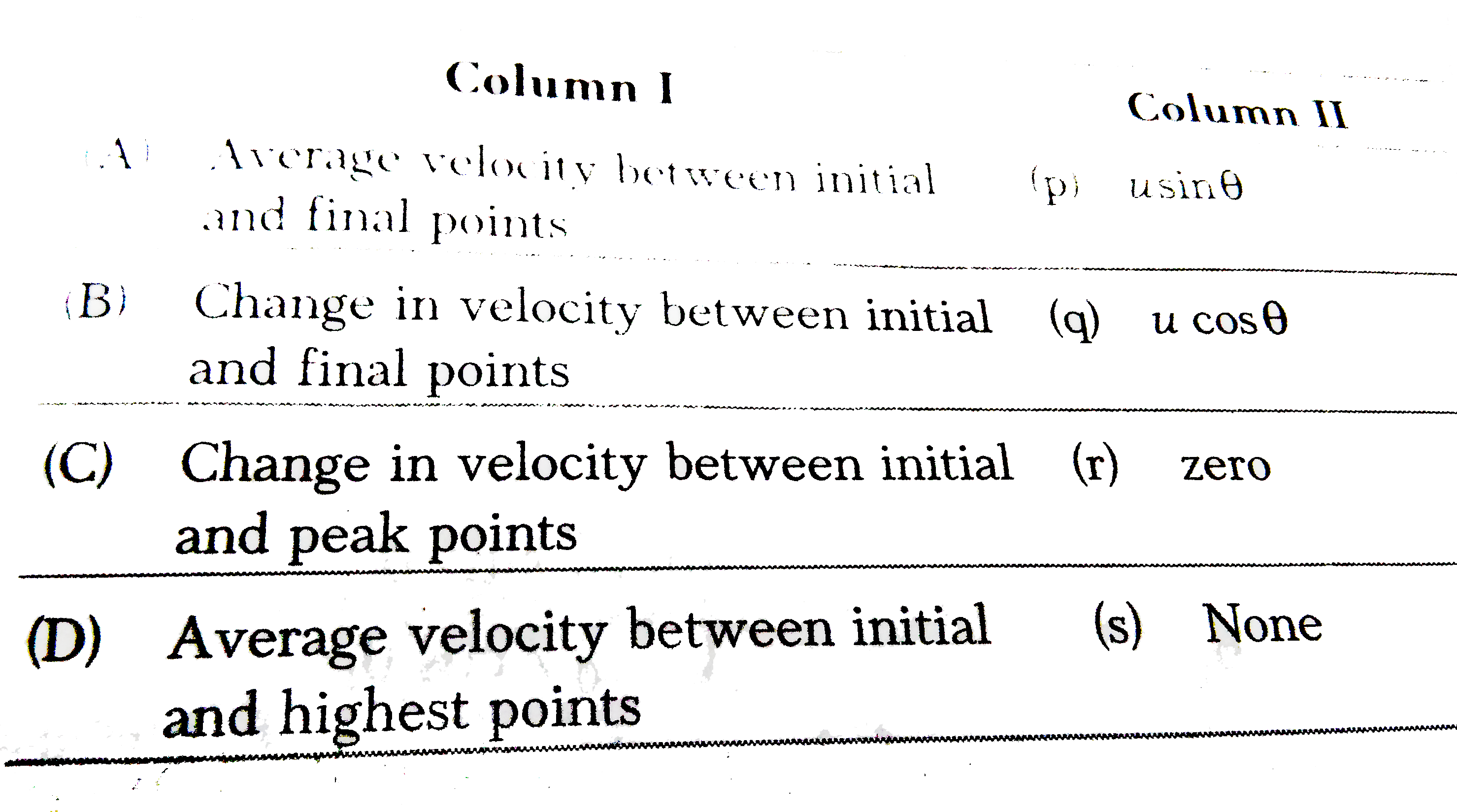A particle is projected vertically upwards from ground another particle is projected from ground with different velocity at angle θ with horizontal. Find ratio of maximum height attend by both the particles. It is given that time of flights of both the particle is same.
2
1
44593
44652
To solve the problem of finding the ratio of maximum heights attained by two particles projected under different conditions, we will follow these steps:
Step 1: Define the maximum height of the first particle
The first particle is projected vertically upwards with an initial velocity u. The maximum height h1 attained by this particle can be calculated using the formula:
h1=u22g
where g is the acceleration due to gravity.
Step 2: Define the maximum height of the second particle
The second particle is projected at an angle θ with an initial velocity v. The vertical component of its velocity is vsinθ. The maximum height h2 attained by this particle is given by:
h2=(vsinθ)22g=v2sin2θ2g
Step 3: Set the time of flight for both particles
We know that the time of flight T for both particles is the same. The time of flight for the first particle is:
T1=2ug
And for the second particle, it is:
T2=2vsinθg
Since T1=T2, we can equate the two expressions:
2ug=2vsinθg
This simplifies to:
u=vsinθ
Step 4: Substitute u in terms of v into the height ratio
Now we can find the ratio of the maximum heights h1h2:
h1h2=u22gv2sin2θ2g=u2v2sin2θ
Substituting u=vsinθ into the equation:
h1h2=(vsinθ)2v2sin2θ
This simplifies to:
h1h2=v2sin2θv2sin2θ=1
Conclusion
The ratio of maximum heights attained by both particles is:
h1h2=1
The first particle is projected vertically upwards with an initial velocity u. The maximum height h1 attained by this particle can be calculated using the formula:
h1=u22g
where g is the acceleration due to gravity.
The second particle is projected at an angle θ with an initial velocity v. The vertical component of its velocity is vsinθ. The maximum height h2 attained by this particle is given by:
h2=(vsinθ)22g=v2sin2θ2g
We know that the time of flight T for both particles is the same. The time of flight for the first particle is:
T1=2ug
And for the second particle, it is:
T2=2vsinθg
Since T1=T2, we can equate the two expressions:
2ug=2vsinθg
This simplifies to:
u=vsinθ
Now we can find the ratio of the maximum heights h1h2:
h1h2=u22gv2sin2θ2g=u2v2sin2θ
Substituting u=vsinθ into the equation:
h1h2=(vsinθ)2v2sin2θ
This simplifies to:
h1h2=v2sin2θv2sin2θ=1
The ratio of maximum heights attained by both particles is:
h1h2=1
Topper's Solved these Questions
Similar Questions
Knowledge Check
A particle is projected from ground with speed u and at an angle θ with horizontal. If at maximum height from ground, the speed of particle is 1/2 times of its initial velocity of projection, then find its maximum height attained.
Au2gB2u2gCu22gD3u28gA particle of mass m is projected form ground with velocity u making angle θ with the vertical. The de Broglie wavelength of the particle at the highest point is
A∞BhmusinθChmucosθDhmuA particle of mass 'm' is projected from ground with velocity u making angle θ with the vertical. The de-Broglie wave length of the particle at the highest point is:
A∞BhmusinθChmucosθDhmu
A particle is projected vertically upwards from ground with velocity 10 m/s. Find the time taken by it to reach at the highest point ?
View SolutionA particle is projected with initial velocity u making an angle α with the horizontal, its time of flight will be given by
View SolutionA particle is projected from the ground with an initial speed of v at an angle θ with horizontal. The average velocity of the particle between its point of projection and highest point of trajectroy is :
View SolutionA particle is projected vertically upwards from ground. Which of the following plots best describe the momentum vs height from the ground?
View SolutionA particle is projected from the ground with velocity u at angle θ with horizontal.The horizontal range,maximum height and time of flight are R,H and T respectively.Now keeping u as fixed, θ is varied from 30∘ to 60∘.Then
View Solution

